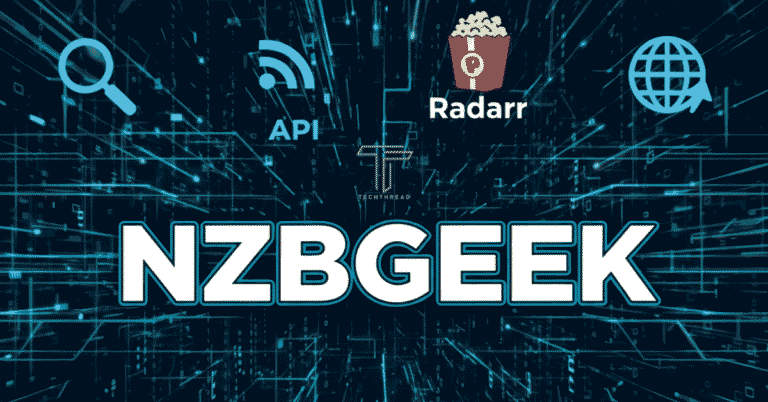185.63.253.300: What You Need to Know About Invalid IP Addresses
The world of IP addresses can be quite confusing, especially when encountering unusual or seemingly incorrect addresses. One such example is 185.63.253.300, an address that doesn’t follow the rules of IP formatting. At first glance, it may appear to be a legitimate IPv4 address, but the last octet of 300 makes it invalid.
This can cause confusion for network administrators, security professionals, and anyone trying to troubleshoot network traffic or security issues. Understanding invalid IP addresses like 185.63.253.300 is crucial for network diagnostics and security.
In this post, we’ll take a deep dive into what makes this IP invalid, why it’s important to recognize malformed addresses, and how to handle them when they appear in your network traffic.
Table of Contents
Why Is 185.63.253.300 Not a Valid IP Address?
To understand why 185.63.253.300 is not a valid IP address, we first need to break down the structure of an IPv4 address. An IPv4 address consists of four octets, each ranging from 0 to 255. For example, a valid address might look like 192.168.1.1, where each number in the address falls within the range of 0-255. However, 185.63.253.300 exceeds this range in its final octet.
The last number, 300, is outside the permissible range. Since octets cannot exceed 255, any address with a number greater than 255 in any octet is considered invalid. Therefore, 185.63.253.300 is technically not a valid address and cannot be used to identify any real device or server on the internet.
This invalid format doesn’t always signal malicious activity, but understanding why and how this happens is vital in managing network traffic and preventing security breaches or errors in configurations.
How to Identify the Location and Origin of Invalid IPs
When network administrators or security teams come across malformed IP addresses like 185.63.253.300, they often wonder if it’s possible to track its geographical location or origin. Normally, this would be a straightforward process using IP lookup tools, which map IP addresses to geographic regions or organizations. These tools allow us to trace where an IP is registered, who owns it, and even its city or country of origin.
However, because 185.63.253.300 is an invalid IP address, tools such as these may not return meaningful results. In fact, most lookup services will simply flag this address as non-existent. The inability to pinpoint a location for 185.63.253.300 doesn’t necessarily mean it’s malicious, but it does highlight the challenges of dealing with invalid addresses.
For network professionals, encountering such addresses means that further steps need to be taken to understand whether the malformed IP is part of a misconfigured network setup or a sign of an error in logging data. Invalid IP addresses like 185.63.253.300 may sometimes appear in error logs, making it vital to differentiate them from valid addresses and investigate their origins when necessary.
IP Lookup Tools and Their Role in Investigating Invalid Addresses
IP lookup tools are essential for network security professionals, allowing them to identify who owns an IP address, what organization it belongs to, and where it is geographically located. These tools are useful for tracking malicious IPs, verifying if an IP is legitimate, and uncovering potential risks.
When 185.63.253.300 is entered into an IP lookup tool, the result will likely be incomplete or show no associated data due to its invalidity. Most of the time, these lookup services can only process valid IP addresses, so an incorrect IP will either show as a non-existent address or simply return a “null” result.
That said, while 185.63.253.300 may not return useful data through an IP lookup, knowing how to use these tools for valid IPs is critical. In a network security scenario, if a legitimate, valid IP address shows up in suspicious activity logs, tools like WHOIS or other IP checkers can provide valuable details to help investigate and track down potential threats.
The Role of WHOIS Records in Understanding Invalid IPs
WHOIS records are another valuable resource for anyone trying to investigate an IP address. They provide detailed information about the ownership, registration, and history of an IP address. Typically, WHOIS records include the name of the organization that owns the IP address, the contact information, and the IP’s registration date. They are often used for legal and cybersecurity purposes.
In the case of 185.63.253.300, a WHOIS lookup will return no meaningful results. Since this IP is invalid, WHOIS data won’t provide the usual ownership information. However, understanding how to interpret WHOIS records for valid IPs can still be extremely helpful in the broader context of IP investigations. When an IP is valid and shows up in a suspicious log, WHOIS records can help security professionals trace its origin, determine its geographic location, and even identify if it’s associated with a known malicious entity.
In addition, WHOIS records can be a good first step in investigating potential vulnerabilities in your network. Malformed IP addresses such as 185.63.253.300 serve as an important reminder that WHOIS records are a critical part of network analysis, but they are only useful when the address is correctly formatted and valid.
Security Concerns and Implications of Invalid IPs Like 185.63.253.300
While 185.63.253.300 may seem harmless, any malformed IP address that appears in your system could be a sign of a misconfiguration, an attack, or a failed attempt to hide the true source of traffic. Invalid IP addresses like this one are often used by attackers to obscure their location and evade detection by security systems. They might appear in network logs or traffic reports, especially when attackers are trying to avoid being traced.
Invalid IPs could also result from incorrect entries or errors during network setup. For instance, network misconfigurations might accidentally introduce an IP address that is outside the allowed range, causing devices or servers to fail to connect properly. While not every invalid IP represents a security threat, it’s important to remain vigilant when they appear, as they could also signal more sophisticated attacks like DDoS or IP spoofing.
In cases where 185.63.253.300 appears in network diagnostics, it’s essential to investigate further. Using tools like IP filters or firewalls can help block malformed IPs, preventing them from causing harm to your network security.
Common Scenarios and Legitimate Uses of Invalid IPs
Although 185.63.253.300 is invalid, similar malformed IPs might appear for valid reasons, such as during network testing or troubleshooting. For example, network administrators sometimes configure devices with temporary or placeholder IPs that are purposely invalid. These IPs are used when testing networks or rerouting traffic temporarily.
Another common scenario is human error. A network administrator might accidentally enter an incorrect IP address during the configuration of a network device, resulting in an invalid IP like 185.63.253.300 appearing in logs. These errors can usually be corrected easily once identified, but they do need to be addressed promptly to ensure they don’t disrupt network operations or create unnecessary concerns among security teams.
While 185.63.253.300 is unlikely to be used intentionally in a production environment, understanding why invalid IPs appear and knowing how to address them is key to ensuring smooth network operations and security. In most cases, invalid IPs are not malicious but can be signs of misconfigurations that need to be fixed quickly.
What Steps Can You Take When Encountering Invalid IPs?
If you encounter 185.63.253.300 in your system, don’t panic. First, confirm that the IP address is malformed and cannot be used by any legitimate device. Here’s what you can do next:
- Verify the Source: Check the source of the IP address. If it’s showing up in logs, try to understand why it’s there and whether it’s tied to any specific network or device.
- Investigate Configuration Errors: Misconfigurations are a common cause of invalid IP addresses. Verify that your network devices, routers, and servers are properly configured and that there are no entry errors in the system.
- Enhance Network Monitoring: Set up network monitoring tools to detect and flag malformed IPs. These tools can help you spot other unusual or invalid addresses before they cause trouble.
- Update Security Systems: Make sure your firewall, intrusion detection systems, and other security protocols are configured to filter out or flag suspicious IPs, including malformed ones like 185.63.253.300.
By following these steps, you can minimize the risk posed by invalid IP addresses and ensure that your network stays secure.
Final Thoughts on Managing Invalid IPs in Your Network
In conclusion, while 185.63.253.300 may be an invalid IP address, the underlying issue of malformed IPs is something that every network administrator should be aware of. Recognizing invalid IPs, understanding their potential origins, and taking appropriate action can help you avoid security issues, misconfigurations, and other network-related challenges.
Maintaining a well-monitored and properly configured network is essential in today’s security landscape. Whether dealing with invalid IPs, misconfigured settings, or potential attacks, knowing how to handle each situation will make all the difference in keeping your network secure. Stay vigilant and keep your network’s IP addresses well-validated to avoid unexpected issues and potential risks.
Also Read: IP2 Network: Exploring Features, Security Applications & Future Trends







